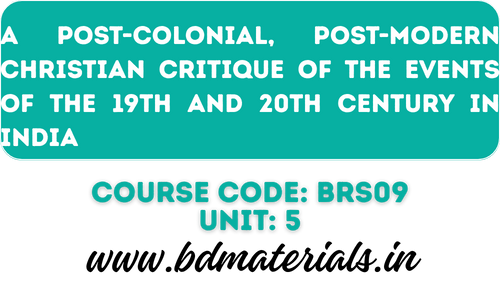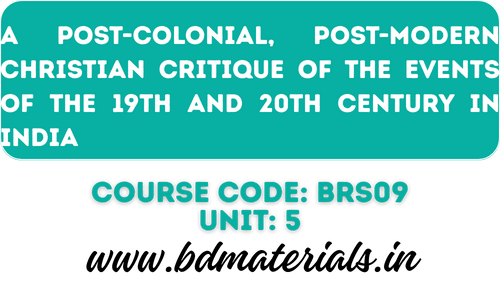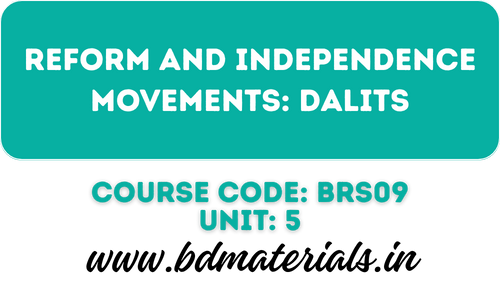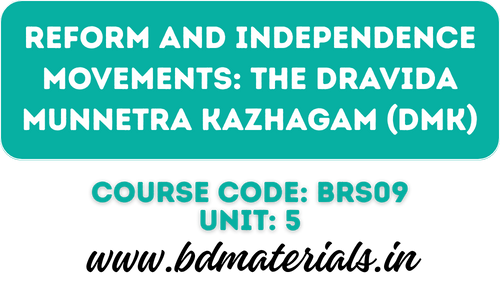Influential Thinkers: Mahatma Gandhi
Mahatma Gandhi and his Philosophy
His Life
Mohandas Karamchand Gandhi was born at Porbunder in Kathiawad, Gujarat on 2nd October 1869, as the son of a Modh Bania who had thrice been Prime Minister of local princely states. He grew up in a religious home. Gandhi’s mother was a Vaishnavaite Bhaktini. When he was thirteen Gandhi was married to Kasturbai of about his own age.
After his matriculation he sailed to England on 4th September 1887 to study law. He was made to take three oaths before permission was granted to go to England, that he will not touch wine, women or meat during his stay there. He kept the vows he had made to his family. In England he learned Latin, French and English, and passed the London matriculation. He was called to the bar on 10th June 1891.
During his stay in England he read ‘Gita’ for the first time and it was Sir Edwin Arnold’s translation and he was impressed by it. Other books that influenced him were the ‘New Testament’ especially the sermon on the mount in it, ‘The height of Asia’ and ‘Hero and hero worship’ which is about prophet Mohammed.
On his return to India in 1891, Gandhi began his career as a practicing lawyer in Bombay. Then came a summons to Africa from a Muslim firm in need of legal advice. Gandhi accepted and sailed to Durban in April 1893. Almost on the day he landed, he was flying out of a first class railway compartment, because a European fellow traveler objected to the presence of a ‘coolie,’ for Indians were called coolie.
The anglicized ‘coolie’ barrister now began to change into the Mahatma. Gandhi’s religion deepened. Protestant friends, trying to convert him, drove him to a more thorough study of his own religion. Gandhi’s diet and dress were becoming progressively simpler. In 1912, he had given up European clothes and was living on fresh and dried fruit alone. Already by 1906 he had, with Kasturbai’s consent, took a vow of perpetual celibacy.
At the same time the political leader was emerging. In 1894, Gandhi had organized the Natal Congress to agitate for the rights of Indians serving as indentured servants in South Africa. He was its secretary, edited its organ ‘Indian Opinion,’ championed its cases in the law courts. During the Boer war of 1899 and again in the so-called Zulu rebellion of 1906, he led an ambulance corps into the field, and won a war medal. Meanwhile, influenced by Tolstoy and Thorean, he had been thinking out his technique of satyagraha, and in the years 1909-1914 conducted two brilliant non-violent campaigns against the famous ‘Black Act’ which brought him two terms in prison, but eventually compelled the South African government to yield.
After being in South Africa for twenty years, Gandhi returned to India in 1914 and entered the political arena under the tutelage of the moderate Gokhale. He opened the satyagraha ashram on the banks of the Sabarmati river near Ahmedabad, in Gujarat, and went round to get himself acquainted with the conditions of India. Gandhi’s prestige had risen immensely due to his successful intervention on behalf of the indigo cultivators of Champaran and the mill workers of Ahmedabad, found himself at the head of the growing national movement.
His leadership was new and strikingly effective. In a short time the “half naked fakir” had changed the Congress from a body of anglicized, middle class lawyers agitating in the main for better jobs, into a revolutionary mass movement. Gandhi led three main non-violent campaigns (1) The Bardoli campaign 1921, (2) the Salt Tax Campaign 1931, and (3) The Quit India movement, 1940.
Political independence was the least of the Gandhi’s aims. It was a complete social renewal that he wanted, the Hindu-Muslim unity and the removal of untouchability. But while the masses adored the Mahatma, they were slow to grasp his teaching. The aftermath of the partition saw India burning with communal riots. More riots followed and the long, tragic procession of refugees. In those dark days of a nation’s birth pangs, Gandhiji was at his greatest, striding through the blood-bathed villages of Bengal and Bihar, pleading for peace, and resorting to his ultimate weapon, a three-week fast, to shock his co-religionists into sanity. Peace was eventually restored – but not before an immense price had been paid. A Hindu fanatic, enraged by Gandhiji’s concessions to the Muslims, shot him dead on January 30th 1948.
His Teachings
Gandhiji belongs to the long line of religious reformers, who from the time of Ram Mohan Roy, have striven to revive Hinduism by integrating the ethics of the New Testament with the philosophy of the Upanishads. He did not, however, inherit his ideas from the nineteenth century reformers, but arrived at them through an intensely personal odyssey, in which his boyhood, Vaishnavism, Protestant contacts in England and Africa, the writings of Tolstoy and Ruskin all had a part. What emerged was a new interpretation of Hinduism, whose distinctive features can be summed up in the key Gandhian words: satya and ahimsa (Truth and non-violence). As Gandhiji himself says “My religion is based on Truth and Non-Violence. Truth is my God, and Non-violence is the means to reach Him.”
a) God
For Gandhi, God is a living presence as well as an inner voice. He says: “There is an indefinable mysterious power that pervades everything. I feel it, though I do not see it.” Gandhi called God “Sat” which means Absolute Being, Reality or Truth. He says, “Truth is God”. God is in us, around us. Further, perfect non-violence is necessary for us in our search for God. Gandhi defines the Hindu creed as “Search after truth through non-violent means”.
b) Ahimsa (Non-violence)
According to Gandhi, ahimsa is nothing but the law of love. It is extended to the sub-human beings also. He applied it to national and international affairs.
c) Varnashramadharma
According to Gandhi, the modern caste system is a breach of ahimsa. Varna is based on heredity, division of labour, equality, and spiritual economy. If people follow their hereditary occupations, there will be no unemployment and unhealthy competitions. There would be cooperation and harmony in society. All life is equal and one. There should be no notion of superiority and inferiority. There would be time for all to make spiritual pursuits. Gandhi believed that the caste system was a relic of Hinduism which hindered the growth of true religion. Therefore for India as well as Hinduism to grow and develop, he believed that the caste system must be done away with.
d) Swadeshi
It is making a sacrifice and using what is available in one’s immediate environment which would serve others. Gandhi applies the principle of swadeshi (indigenous) not only to economics but also to education. In this context, it means the use of the mother-tongue as the medium of instruction in all stages. It would also mean introducing a basic craft in the school. In politics it means the use of native institutions, for example, Panchayat Raj (self-government in the villages). In religion, it means that people should retain their ancestral religion and cleanse it of corruption. He was against converting people from one religion to another, since he felt that no religion is perfect. He taught that people should respect other religions. He said that all religions are branches of the Tree of Truth.
e) Untouchability
Gandhi said that untouchability is a cancer. It is a breach of the doctrine of ahimsa. It has brought an evil name to Hinduism. Referring to the racism in South Africa, Gandhi said that when Hindus treat their own as untouchables, then they cannot complain if the whites in South Africa treat them as untouchables. Gandhi’s campaign against untouchability was the greatest service that he rendered to Hinduism.
f) Caste System
According to Gandhiji, the modern caste system is a breach of ahimsa. Varna is based on heredity, division of labour, equality, and spiritual economy. If people follow their hereditary occupations, there will be no unemployment and unhealthy competitions. There would be cooperation and harmony in society. All life is equal and one. There should be no notion of superiority and inferiority. He believes in the Varnasrama dharma in its strictly Vedic sense. Varna in this sense will sanction certain restrictions on inter-dining and intermarriage, but never untouchability, which is, “a heinous crime against humanity”.
g) Women
Gandhi denounced child marriages, enforced widowhood and the devadasi system. He instructed that daughters and sons should be treated as equals. Women are not inferior to men. They should not suffer from any legal disability not suffered by men. Gandhi said that women have more moral power than men.
h) Brahmacharya
Brahmacharya is complete control over all the senses. It is more than control of animal passions. Thought-control is most important. Both the body and the mind have to be brought under control. Brahmacharya is one of the means for search after Brahman. Gandhi says that if a man or woman is able to fully overcome sexual desire, marriage is unnecessary. Marriage is yielding to weakness. He thinks that conjugal love need not express itself through lust. As a married man, Gandhi took the decision to practice Brahmacharya and he continued in this state till his death. He encouraged unmarried girls to remain single for the sake of service.
i) Ashram Vows
The members of the Sabarmati Ashram which Gandhiji founded were expected to take a number of vows. There are eleven vows: 1) Truth 2) Non-violence 3) Celibacy 4) Non-Stealing 5) Non-Possession 6) Control of the palate 7) Fearlessness 8) Removal of Untouchability 9) Bread-labour 10) Equality of religions and 11) Swadeshi.
j) Satyagraha
Satyagraha means holding on to truth. It is non-violent resistance to injustice inflicted by those in authority. It takes spiritual strength to do this. The satyagrahi must have the following qualifications: i. He must believe that Truth will triumph in the end. ii. He must have faith in human nature. He appeals to the highest in one’s opponent through one’s own suffering; also the sympathy of the people at large is enlisted towards a just cause. iii. He should have infinite patience. His suffering may continue for a long time; the struggle may even end in his death. But he believes that the just cause he represents will triumph in the end. iv. He should be willing to sacrifice. He may lose his property; his family may be reduced to poverty. v. He should not fear human authority. He must fear only God. vi. He must not take unfair advantage over his opponent. vii. He must not deviate from Truth and righteousness. viii. He should so conduct himself that his opponent would have confidence that his life is safe in his hands. ix. He should be charitable, polite and gentle towards his opponent. x. He should be always willing to come to terms with the opponent even if it would result in loss of prestige for him.
Gandhi says that satyagraha is simply an application of the Gita doctrine of Nishkamakarma or Karma Yoga. It has two stages: non-violent non-cooperation and civil disobedience. In non-violent non-cooperation, one refuses to associate oneself with the wrong. If the ruler is wicked, the people should withdraw their cooperation from him and endeavour to turn him away from his wickedness. The aim of non-cooperation is to paralyse the government. In non-cooperation no law is broken. But in civil disobedience, the people refuse to obey the laws of the evil state and finally refuse to pay taxes. This is open rebellion, but it is non -violent. The rebels are willing to suffer whatever punishment is inflicted on them for breaking the civil law. Non-cooperation and civil disobedience are failed only after negotiations are failed. Satyagraha is not undertaken lightly.
Gandhi forged the method of satyagraha first in South Africa. It worked there, and it became as if it were a rehearsal for India. It worked in India and independence was won for India without an armed struggle with the British.
k) Religion
As a Hindu, Gandhi did not believe in the orthodox view of God. He had no faith in idol worship. Religion did not consist of worshipping god or reading a religious book. Religious life meant identification with Humanity. He said, “I reject any religious doctrine that does not appeal to reason and is in conflict with morality.” He said that Hindus must become better Hindus, and Muslims must become better Muslims as a result of understanding other religions. In his opinion, politics and religion could not be separated because both have service of humankind as their ideal.
l) Humanism
For Gandhi, to worship God is to serve the poor. The only way to find God is to see him in his creation and serve all. His love for humanity was so great that he recognized no limitations of race or country. Throughout his life, Gandhi worked to free Indians from poverty. He promoted khadi because it would provide work for many. He denounced industrialization because it would replace human labour and increase unemployment. He was a Socialist and he hoped that state control of useful industries would benefit the common man rather than encourage the profit motive of the rich capitalists.
m) Sarvodaya
The term ‘sarvodaya’ became a synonym for Gandhian ideology. This Sanskrit term is a compound of ‘sarva’ (all) and ‘udaya’ (uplift). So literally, sarvodaya means “upliftment of all.” For Gandhiji, sarvodaya meant the universal welfare of the entire humanity. It refers not primarily to material objects but to the total personality of the individual and to the cultural contents of a nation. The Sarvodaya ideology incorporates all those fundamentals of Gandhism such as soul-force, individual reform, self-sacrifice, re-construction of India on the lines of ancient Indian village.
During the days of the national struggle, Gandhiji visualized this ideology in his mind, this was the only way to meet the challenges of the contemporary ideologies like communism and capitalism. The final goal in the Gandhian scheme of social evolution is the attainment of ‘Ram Rajya’ or ‘the kingdom of righteous rule.’ All of Gandhiji’s political, economic and social endeavors were oriented towards this goal. This Gandhian ideology was the outcome of the influence of Gita, and ideas of Ruskin and Tolstoy.
Gandhiji planned to translate his Sarvodaya ideology into the social and economic life of India after independence but he himself became a victim of the violence he tried to overcome. The Gandhians continued the sarvodaya plan which Gandhiji evolved during his lifetime. Sarvodaya acquired the character of a movement only when Vinoba Bhave started the Bhoodan movement as a counter-point to the communist activities in Telengana. Under Vinoba Bhave’s leadership, sarvodaya has become a living ideology which has given new dimensions to Gandhism.
n) Gandhi’s Understanding of Christ and Christianity
Gandhiji’s first contact with the Gospel was not very positive to start with. He was influenced by the Sermon on the Mount of Jesus. In spite of his rejection of the Gospel message in its essence, Gandhiji was honest enough to say that it is Christianity to which he is indebted “for the religious quest which (it) awakened in me.”
o) Christ
Gandhiji rejects the significance of Jesus’ historicality, for Jesus is only an illustration of the principle of Christhood. He says, “I may say that I have never been interested in a historical Jesus. I should not care if it was proved by someone that the man called Jesus never lived, and that what was narrated in the Gospels was a fantasy of the writer’s imagination. For the Sermon on the Mount would still be true to me.”
Therefore, for Gandhiji, the cross of Jesus is only a symbol of the principle of Christhood, and at best a concrete example of Christ’s selfless love for others. So Jesus was a martyr. But in the ultimate analysis what is significant is the eternal principle of Christhood and the person becomes irrelevant. Hence there is no uniqueness in Jesus not found in other’s souls. The birth, life and death of such Christ’s are recurring events in the history of mankind. It is by following what Jesus taught that we can attain to his height. It is clear that in all of this Gandhiji is strictly following the primacy of principle over person.
p) Christianity
Having experienced the western Christianity adulterated with imperialism and materialism, Gandhiji has a lot to say to remake Indian Christianity. He insisted that Indian Christianity must disassociate itself from its western counterpart, because of the latter’s alliance with himsa and mammon. Christians have misunderstood Christ’s command to “go ye into all the world” by taking it to mean only proselytism. But what Christ actually set his disciples into the world for was philanthropic work.
Evaluation
H.T. Mazumdar evaluated Gandhi and said, “He was a patriot but his patriotism was the same as humanity. He was a patriot because he was humanitarian.” “Gandhi was a nationalist in order to be a true internationalist.” According to Sarma, “Gandhi‘s originality consists in extending the ideal of non-violence from individuals to nations and inventing a technique for its application.”
Gandhi was the greatest karma yogin that India has ever produced. He had the spirit of detachment. His philosophy was practical, his whole life, a sacrifice offered on the altar of humanity. Therefore, one can truly say that Gandhi exemplified anasakti yoga, selfless action. This is the name given to his commentary on the Bhagavad Gita.
However, Gandhi also has his share of critics. In fact, Gandhi had been enmeshed in controversies ever since he plunged into the racial politics of Natal until he was assassinated fifty-four years later. He had to contend with the suspicious eyes of the British, and also with discontent within the Congress Party. He infuriated orthodox Hindus for denouncing caste exclusiveness and untouchability and for advocating secular politics. He narrowly escaped a bomb attack in Poona in 1934, but fell victim to the bullets of a Poona Brahmin who accused him of betraying the Hindu cause fourteen years later. Curiously enough, for years protagonists of Pakistan had branded Gandhi as the leading enemy of Islam.
In the book Gandhi Behind the Mask of Divinity written by a United States Army officer G. B. Singh, the author challenges Gandhi‘s image as a saintly, benevolent, and pacifistic leader of Indian independence, told through Gandhi’s own writings and actions over the course of his life.
The book claims that Gandhi emulated racism from the Hindu ideology of caste towards the blacks of South Africa and the Untouchables, instigated ethnic hatred against foreign communities, and, to this end, was involved in covering up the killing of American engineer William Francis Doherty.
Gandhi fought for the upliftment of the scheduled castes, the untouchables. He even coined the term “Harijans” to refer to them. However, “Harijan”, the name by which the Scheduled Castes are popularly known, is resented by them. “It is a dirty word; don’t ever use that,” says B.P. Maurya, a prominent leader of the Scheduled Castes.
The name was coined by Mahatma Gandhi when he launched his campaign for the upliftment of the “untouchables”. When some of them protested to him against it, he justified it saying: “So long as untouchability is not completely removed, a name to distinguish (those suffering from it) is required and an inoffensive name is any day better than one that stinks in the nostrils.”
But Maurya thinks the name “Harijan” stinks too. Though Gandhi said it meant “Children of God,” Maurya says it was a euphemism for the illegitimate children of the devadasis (temple dancers). Other members of the Scheduled Castes say it originally referred to monkeys, the children of Hanuman. Asks Maurya, “If we alone are the Harijans, Children of God, what about the rest? Are they Shaitan ke bachhe (children of satan)?”
The disagreement over the use of “Harijan” to refer to Dalits goes back to the 1930s. In fact, on January 22, 1938, Ambedkar walked out from Bombay Legislature protesting the use of the word. It is argued by many that, by using the word “Harijan”, Gandhi instead of dealing with the real problem, which was the mindset of the upper castes, he chose to tinker with the identity of the Dalits to make it more suitable for the upper castes. And in doing so, Gandhi wanted to make sure that he did not ruffle the feathers of influential Hindus, for he needed their support for his politics.
Further, all that “renaming” of Dalits as Harijans did was side-step the issue. It only removed “the offence to the ear” and did nothing more, as Gandhi was once told.
Gandhi is also criticized for another quaint view of his. Though he opposed untouchability, he believed in Varnashrama Dharma from which untouchability springs. But unlike the more orthodox Hindus, he did not think that this division of society into occupation-based castes entailed untouchability. Equality could go with “pure” Varnashrama Dharma, he believed. Defending the dogma, Gandhi who often said he had voluntarily become a Harijan, said: “Varna is not a man-made law to be imposed or relaxed at will. It is natural to man in his regenerated state.”
Friendly Note
Bachelor of Divinity Materials is your go-to resource for comprehensive Biblical studies, supporting students in Bachelor of Divinity (B.D.) and other theological courses. Our platform offers access to the full syllabus, detailed answers, and a vast collection of assignments, study guides, articles, and research papers to help you excel academically.
We provide downloadable PDFs of study materials, including books and journals, for convenient learning anytime, anywhere. Whether preparing for exams or conducting research, our resources cater to both students and scholars in biblical studies.
Committed to empowering theological learners, we aim to deliver high-quality, authentic study materials. Explore Bachelor of Divinity Materials to deepen your understanding of God’s Word and Christian doctrine, making it a valuable resource for aspiring ministers and anyone dedicated to theology.






